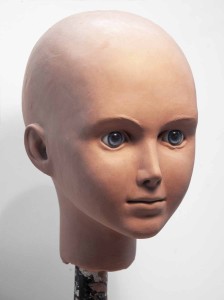![]()
 Character FX artists from MastersFX recently created the creepy doll named “Brahms,” for Lakeshore Entertainment and STX Entertainment‘s horror film The Boy, which opened Jan. 22.
Character FX artists from MastersFX recently created the creepy doll named “Brahms,” for Lakeshore Entertainment and STX Entertainment‘s horror film The Boy, which opened Jan. 22.
MastersFX’s Vancouver studio created the four-foot tall doll that seems to rule the household of a remote manor. In the film, a young American woman, Greta, (Lauren Cohan of AMC‘s The Walking Dead), takes a job as a live-in nanny in rural England. She comes to find out that the child she was hired to care for is not an actual eight-year-old boy, but instead, a life-sized porcelain doll named Brahms.
“We have a long-standing relationship with our friends at Lakeshore Entertainment, usually making vampires and werewolves for their Underworld films,” said company president Todd Masters. “But this time, creating Brahms, was a completely different challenge.”
“We knew that this Brahms doll needed to be more like a supporting cast member for Lauren Cohan to play against, rather than just serve as her prop,” Masters added, “So we added all sorts of weird little forms and details within his features. We wanted to depict a good deal of realism with his appearance, even by his ability to make a simple turn of his head. Adding in cinematographer Daniel Pearl‘s (Texas Chainsaw Massacre) incredible lighting, he, director William Brent Bell, and especially producer Richard Wright were instrumental in helping us to present Brahms’ simple, downplayed, yet truly bizarre features.”
The company created several dolls to accommodate the needs of various stages of the production. Lead artist Yukiyo Okajima sculpted Brahms’ delicate features. “This was tough in some ways, as sometimes subtle nuances can be more painstaking, than, say creating a Lycan – where we have fur and slime to help us hide some of our FX tricks. But with The Boy, our team has really outdone themselves by creating a truly creepy doll for the movie ages,” said Masters.
Working on set, MastersFX artist Tannis Hegan operated and maintained each of the dolls to ensure that each dolls’ features would reflect the proper emotion and tone. Each doll was articulated as though a large stop-motion armature was inside it. This gave Hegan the ability to make the slightest of head turns, or move into a body pose that would convincingly portray the appropriate character’s emotion as each scene required.





